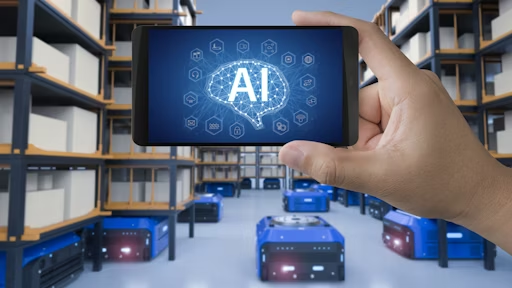
Artificial intelligence is sweeping across industries. Teams are leveraging this technology to discover new processes and unlock benefits never before seen. As AI technology continues to advance, teams find new ways to enhance efficiencies, improve productivity and ensure accuracy across operations.
What Is Applied AI?
Applied AI can mimic human intelligence to a small capacity. These systems can accomplish specific tasks using predefined algorithms and vast datasets. Applied AI systems can replicate or imitate existing data, reducing manual, mundane tasks for human workers.
There are several ways to use AI responsibly, including developing software, enhancing communication, creating forecast predictions and promoting continuous learning and training. applied AI enhances efficiency and accuracy by streamlining tasks with precision and offering solutions for optimization across several facets.
How Does Next-Gen AI Work?
Next-generation AI leverages multiple techniques to perform complex applications. These systems utilize natural language processing, machine learning, deep learning and robotics to achieve high levels of adaptability and autonomy.
Natural language processing enables these technologies to understand human language, allowing teams to implement chatbots and sentiment analysis. Machine learning and deep learning empower algorithms to identify patterns and analyze trends to make predictions and recommendations.
Robotics are some of the more advanced facets of next-gen AI, allowing technologies to automate human tasks and complex actions to revolutionize operations.
Using AI in Warehousing Operations
With the unique and increasing capabilities of AI, warehouses have found many ways to leverage these systems to improve operations. Here’s how AI is streamlining warehouse operational efficiency:
Identifying Bottlenecks
A significant advantage of AI for warehouses is identifying bottlenecks. These technologies can analyze data to find trends and identify where there may be delayed product lines, congested ports, capacity shortages or other issues. Along with identifying these issues, AI can come up with workarounds to overcome these challenges.
Responding to Demand Shifts
AI’s predictive capabilities make these systems valuable for identifying peak seasons and periods of little demand. Warehouses can use these predictions to adjust inventory levels to meet demand and avoid excess product or pitfalls. Teams can also use AI to adjust schedules, reallocate resources to meet demand or reroute shipments to help businesses accommodate fluctuations.
Monitoring Shipments
AI also empowers real time insights, enhancing visibility across the supply chain. These technologies can organize and integrate information from logistics providers, manufacturers, suppliers, retailers and final destinations, empowering teams to track movements, predict delays, optimize routes and reroute products when necessary to enhance efficiency.
Driving More Efficiently
Self-driving trucks could become more common in the shipping and warehousing industries, enabling safer driving without the element of human error. These autonomous trucks can also use traffic data to choose more efficient routes.
Maintaining inventory levels
Teams can use AI tools to maintain inventory levels to meet demand and calculate racking capacities for safety and efficiency. Real-time insights empower to anticipate customer demands, including sudden surges. This extra preparation can help teams optimize costs, adjust storage requirements when necessary and boost customer satisfaction.
Reducing Wait Times
Manual processes can often slow operations. Mundane or repetitive tasks like checking in trucks or organizing shelves take time and force human workers to spend less time on more complex issues. AI tools can aid in sorting and picking processes, reducing wait times and allowing human workers to dedicate time to more critical tasks.
Ensure Operational Efficiency With AI
Advanced technologies have the power to transform operations. Each warehousing team can leverage these systems in unique ways to boost efficiency and productivity. It will take time to determine where AI is most impactful for your operations, but the potential for improvement makes the investment worth the effort. In the next few years, leveraging AI technologies will likely span beyond a boost for your business and become a necessity for remaining competitive and improving your bottom line. Embrace these technologies to unlock their potential and boost yours.

